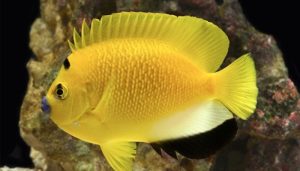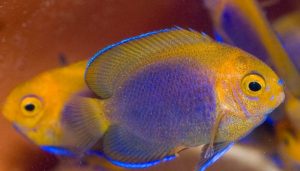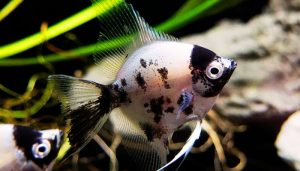Have you recently glanced at your goldfish only to notice its vibrant orange or golden hue fading into a pale white? It’s a concerning sight for any fish owner, leaving you wondering, “Why is my goldfish turning white?”
Goldfish are known for their striking colors, so when they begin to lose their brilliance, it often raises alarm bells. But don’t worry—this phenomenon is surprisingly common and, in many cases, completely manageable with the right care.
A change in your goldfish’s coloration can be caused by a variety of factors, from genetics and age to water quality and diet.
Sometimes, it’s nature’s way of adapting to its environment, while other times, it could be an early warning sign of stress or illness.
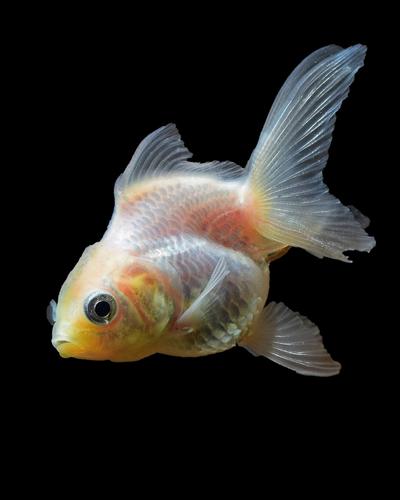
Understanding these causes is the first step to ensuring your aquatic friend lives a long, healthy life.
In this blog post, we’ll dive deep into the reasons behind this transformation and explore practical solutions to help restore your goldfish’s vibrant glow. Whether you’re a seasoned aquarist or new to fishkeeping, you’ll discover insights and tips to keep your gold fish thriving.
Read on to uncover why do goldfish turn white and take proactive steps toward your fish’s well-being!
Table of Contents
ToggleNormal Colors for Goldfish
Goldfish are available in a myriad of colors, with the most common being bright orange, yellow, and even black. These colors are due to the pigments in their skin, which can vary significantly among different breeds, such as the fantail goldfish or the ranchu.
Typically, a healthy goldfish showcases vibrant hues, reflecting its well-being and proper care.
However, factors like age, genetics, and water parameters can influence these colors, leading to a change over time. It’s important to observe the normal color of your goldfish regularly to detect any unusual shifts promptly.
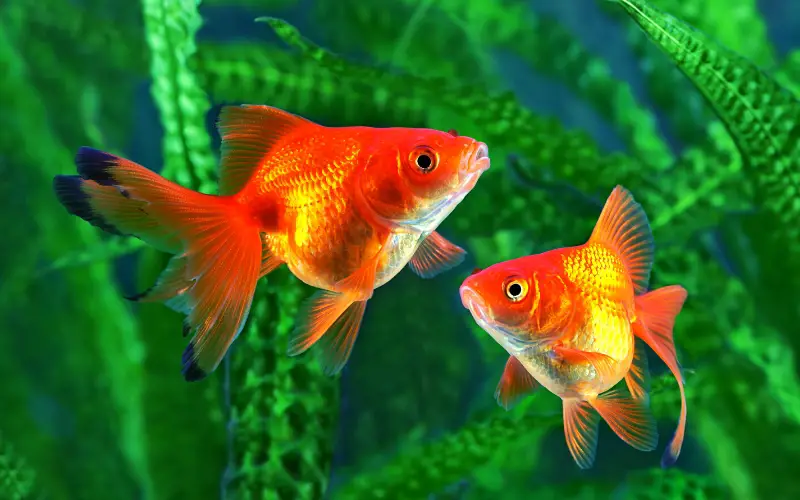
As goldfish grow, their coloration can fluctuate due to selective breeding practices that have aimed to create specific aesthetic traits. For instance, a goldfish may be a vibrant orange when young but can start to lose its brightness as it ages.
This gradual fading or alteration of color is not uncommon and can be a natural part of the goldfish’s life cycle.
Additionally, environmental factors, including exposure to UV light and water quality, play a crucial role in maintaining the color of your goldfish. Regular monitoring of aquarium conditions can help prevent unwanted changes.
Do Goldfish Change Color When Sick?
Yes, goldfish can indeed change color when they are unwell. A common sign of illness in goldfish is a shift from bright colors to a more pale or completely white appearance. This color change may indicate stress, disease, or poor water quality.
For instance, conditions like ammonia poisoning or high levels of nitrite can cause your goldfish to turn white, signifying that immediate action is needed to restore water parameters. Owners should be vigilant about their fish’s behavior and coloration as these can be early indicators of health issues.
In some cases, the presence of white spots or patches can be a sign of ich or other parasitic infections. When goldfish are stressed or sick, their bodies may produce less pigment, leading to a noticeable change in their color.
It is essential to observe any additional symptoms, such as lethargy, loss of appetite, or abnormal swimming patterns, which can accompany the color change. By addressing these symptoms and improving the overall conditions in the aquarium, owners can help their goldfish recover and possibly return to their original vibrant colors.
Why Is My Goldfish Turning White?
There are several reasons why your goldfish may be turning white, ranging from natural aging processes to environmental stressors.
One of the most common causes is the aging process, as older goldfish often experience a gradual change in color, sometimes turning pale white as they mature.
Additionally, poor water quality, which can result from high levels of ammonia, nitrite, or nitrate, can lead to stress and subsequent color changes in your fish. Regular water changes are crucial to maintaining healthy water parameters that support vibrant colors.
Another reason for a goldfish to turn white could be related to genetics. Some goldfish are bred specifically for their color and may not retain their original hue as they grow older.
Selective breeding can lead to variations in pigment expression, causing certain goldfish to fade or change color significantly over time. Furthermore, environmental factors such as low oxygen levels or inadequate lighting can also impact your goldfish’s coloration.
Ensuring a well-maintained aquarium with optimal conditions is vital for preserving the health and color of your goldfish.
Is It Bad If My Goldfish Turns White?
When your goldfish starts turning white, it can be a cause for concern, but the implications depend on the underlying factors. If the change in color is due to natural aging, it typically isn’t harmful.
However, if the color change is sudden and accompanied by other signs of distress, it could indicate health issues such as infections or poor water quality. In such cases, it is essential to investigate the situation thoroughly and take appropriate measures to restore your goldfish’s health and color.
Furthermore, a goldfish turning completely white could signify severe stress or a serious health condition that requires immediate attention. Monitoring your goldfish’s behavior and the conditions of the aquarium will help identify if the color change is a sign of something more concerning.
Regular water tests for ammonia, nitrite, and nitrate levels can aid in ensuring that your aquarium environment is suitable. If any abnormalities are detected, swift action such as water changes or treatment may be necessary to prevent further health decline.
Causes of Color Changes in Goldfish: The 7 Reasons Your Goldfish Is Turning White
There are seven primary reasons that can cause your goldfish to turn white. These include normal aging, poor water quality, stress, genetics, disease, inadequate diet, and environmental changes. As goldfish age, they can naturally lose pigment, leading to a pale appearance.
Poor water conditions, such as high ammonia or nitrite levels, can create a stressful environment that impacts coloration. Additionally, genetic factors can influence how a goldfish’s color develops over time, with some breeds being more prone to fading than others.
Stress is another significant contributor to color changes in goldfish. Factors like overcrowding, sudden changes in water temperature, or aggressive tank mates can lead to a stressed fish, resulting in a shift in color.
Diseases such as ich or other skin infections may also manifest as color changes, often accompanied by other symptoms like white spots. A balanced diet and proper nutrition are essential to maintain a goldfish’s overall health and vibrancy.
Lastly, environmental changes, such as alterations in lighting or tank décor, can affect how a goldfish’s color is perceived, making it important to maintain a stable and comfortable habitat.
The 7 Reasons Your Goldfish Is Turning White
Goldfish turning white can be a concerning sight for fish owners. Here are 7 possible reasons why your goldfish might be turning white:
- Age: As goldfish age, their colors may fade or change. This is a natural process and not necessarily a cause for alarm.
- Genetics: Some goldfish breeds are naturally predisposed to having white or lighter colors. If your goldfish is one of these breeds, the color change may simply be a result of its genetics.
- Stress: Stress can cause a variety of health problems in goldfish, including color changes. Common stressors include overcrowding, poor water quality, and sudden changes in the environment.
- Sun Exposure: Excessive exposure to sunlight can cause goldfish to lose their color. If your goldfish tank is in direct sunlight, consider moving it to a shadier location.
- Environment: Changes in the water quality, such as high levels of ammonia or nitrates, can also cause goldfish to lose their color. Regular water changes and proper filtration are essential for maintaining a healthy environment for your goldfish.
- Diet: A lack of essential nutrients in your goldfish’s diet can lead to color loss. Make sure you are feeding your goldfish a high-quality diet that is appropriate for their species.
- Disease: In some cases, color changes can be a symptom of an underlying disease. If you suspect that your goldfish may be sick, it is important to consult with a veterinarian who specializes in aquatic animals.
If you are concerned about your goldfish’s health, it is always best to consult with a veterinarian who specializes in aquatic animals. They can help you determine the cause of the color change and recommend the best course of treatment.
Can Goldfish Return To Their Original Color?
Whether goldfish can return to their original color largely depends on the underlying cause of the color change. If the change is a result of poor water quality or stress, there is a good chance that, with proper care and adjustments, your goldfish may regain its vibrant hues.
This includes improving water parameters through regular testing and changes, ensuring adequate filtration, and providing a balanced diet. Many goldfish are resilient and can recover when given the right conditions.
However, if the color change is due to aging or genetics, the original coloration may not be fully restored. While older goldfish may lean towards a pale white appearance, they can still be healthy and vibrant in their own way.
Regular maintenance and care can also help enhance the remaining color and overall well-being. Monitoring your goldfish’s health, addressing any issues promptly, and providing a stable environment are key to optimizing the chances of a return to their original coloration.
How to Remedy Ich or Ick in Betta Fish (White Spots)
Ich, or ick, is a common parasite that affects many fish species, including goldfish. This condition is characterized by the presence of white spots on the fish’s body and fins and can lead to significant distress if not treated promptly.
To effectively remedy ich, it is crucial to first identify the symptoms and isolate affected fish if necessary to prevent the spread of the infection.
Maintaining optimal water quality is essential, as poor conditions can exacerbate the issue. Increasing water temperature gradually can help speed up the life cycle of the parasite, making it more susceptible to treatment.
In addition to temperature adjustments, treatment options include using medicated fish treatments specifically designed to combat ich. These medications can be added directly to the tank, but it is vital to follow the manufacturer’s instructions carefully.
Salt can also be used as an effective remedy, as it helps to create an inhospitable environment for the parasite. However, ensure that the salt concentration is appropriate for your specific type of goldfish, as some species may be sensitive to higher salinity levels. Regular monitoring and maintaining healthy water parameters will aid in preventing future outbreaks of ich.
Commonly Asked Questions about Reasons for Fancy Goldfish is Turning White (FAQs)
Why are some of my Old age goldfish turning white?
Old age goldfish may turn white due to a loss of pigment cells (melanophores) as they age. This is a natural part of the aging process.
Why Is My Goldfish Losing Color?
Goldfish losing colour due to stress, poor water quality, inadequate diet, aging, or underlying health issues. Ensure proper water conditions, a balanced diet, and stress reduction to maintain vibrant colors.
Why is my goldfish turning from orange to white?
Why did my goldfish turn white? Goldfish can turn white due to various reasons, including stress, poor water quality, or changes in their environment. It’s essential to check the water parameters and ensure they are stable.
What role does water quality play in my goldfish turning white?
Water quality is crucial for the health of your goldfish. High levels of ammonia or other toxins can stress your fish, potentially leading to them turning white or developing other health issues.
Can old goldfish change color as they mature?
Yes, as goldfish mature, they may gradually change color. Some varieties can go from gold to white, especially if they are older and their color starts to fade.
I have two goldfish, and one is starting to turn white. What should I do?
If one of your goldfish is starting to turn white, check the water quality and parameters. Ensure the tank is clean and appropriately sized, as stress from overcrowding can also cause color changes.
Are there specific goldfish varieties that are more prone to turning white?
Yes, certain goldfish varieties are more susceptible to color changes. While all goldfish can turn white, some, like the Shubunkin, may show white patches more prominently as they age.
How can I help my goldfish regain its color?
To help your goldfish regain its color, ensure it is in a stress-free environment with optimal water quality. Providing a balanced diet and incorporating live plants can also contribute to its overall well-being.
What are the signs of poor water quality affecting my goldfish?
Signs of poor water quality in goldfish include lethargy, loss of color (like turning white), erratic swimming, and the appearance of white patches on their body. Regular water testing can help you monitor these conditions.
Do goldfish need UV light to maintain their color?
Yes, goldfish need UV light to thrive. Proper lighting helps support their immune system and can aid in maintaining their vibrant color. Insufficient light may lead to stress, which can cause fish to turn white.
Is it normal for goldfish to go white as they get older?
Yes, it is normal for goldfish to go white as they get older. This is part of their natural aging process, where their coloration may fade or change over time.
If my goldfish is getting white, should I be worried?
If your goldfish is getting white, it’s essential to assess the situation. While color changes can be normal, sudden or drastic changes may indicate stress or illness, and you should investigate further.
Why is only one of my goldfish turning white?
Individual goldfish may lose color due to unique genetic factors, stress reactions, or underlying health problems specific to that fish. Observe for other signs of illness and consult a veterinarian if concerns arise.
Why is my black goldfish turning white?
Black goldfish turned white due to stress, poor water quality, inadequate nutrition, or underlying health issues. Ensure proper water conditions, a balanced diet, and stress reduction to maintain their dark coloration.
Why is my orange goldfish turning white?
Orange goldfish can lose their color due to stress, poor water quality, inadequate nutrition, or underlying health issues. Ensure proper water conditions, a balanced diet, and stress reduction to maintain their vibrant orange color.
Why is my white goldfish turning yellow?
White goldfish may turn yellow due to a shift in pigment production, potentially triggered by stress, poor water quality, or dietary changes. Ensure proper water conditions, a balanced diet, and stress reduction to maintain their original coloration.
How do you test goldfish tank water?
Use a Test kit to measure key water parameters like ammonia, nitrite, nitrate, pH, and hardness. 1 Regular testing is crucial for maintaining healthy water conditions for your goldfish.
Can goldfish lose their color?
Yes, goldfish can lose color due to stress, poor diet, age, or genetics. Fading or changes can occur; proper care and a good diet can help maintain their vibrancy.
Conclusion
So, Why my goldfish is turning white? In conclusion, the sight of a goldfish turning white can be alarming for any aquarium owner, but understanding the underlying causes can help alleviate concerns. By considering factors such as age, genetics, water quality, and potential health issues, owners can better assess their goldfish’s condition. Regular maintenance of the aquarium, including monitoring water parameters and ensuring a balanced diet, is essential for keeping goldfish healthy and vibrant. While some color changes may be natural, others may require immediate attention to restore your fish’s health and coloration. With proper care, many goldfish can regain their brilliance or adapt beautifully to their new hues.
You might also like
- What Do Goldfish Eggs Look Like? 5 Caring Tips (Must-Read)
- Will Goldfish Mate in Tank? Step-By-Step (Breeding Guide)
- Why Is My Goldfish Turning Black: 5 Common Causes (Solved)
- Can A Goldfish Eat Bread: TOP 7 Best Fish Food Alternatives!
- Why My Comet Gold Fish Tail Bleeding: 5 Reasons (Solved)
- Do Pregnant Goldfish Sit at the Bottom of the Tank? (Solved)
- Bulging Eyes in Goldfish: 3 Major Causes & Proven Solutions
- How Many Goldfish in 5 Gallon Tank: (The Golden Rule)
- Goldfish Breeding in Ponds: 7 Essential Tips for a Stunning Pond
- White Patch on Goldfish 101: Quick & Easy Goldfish Care


